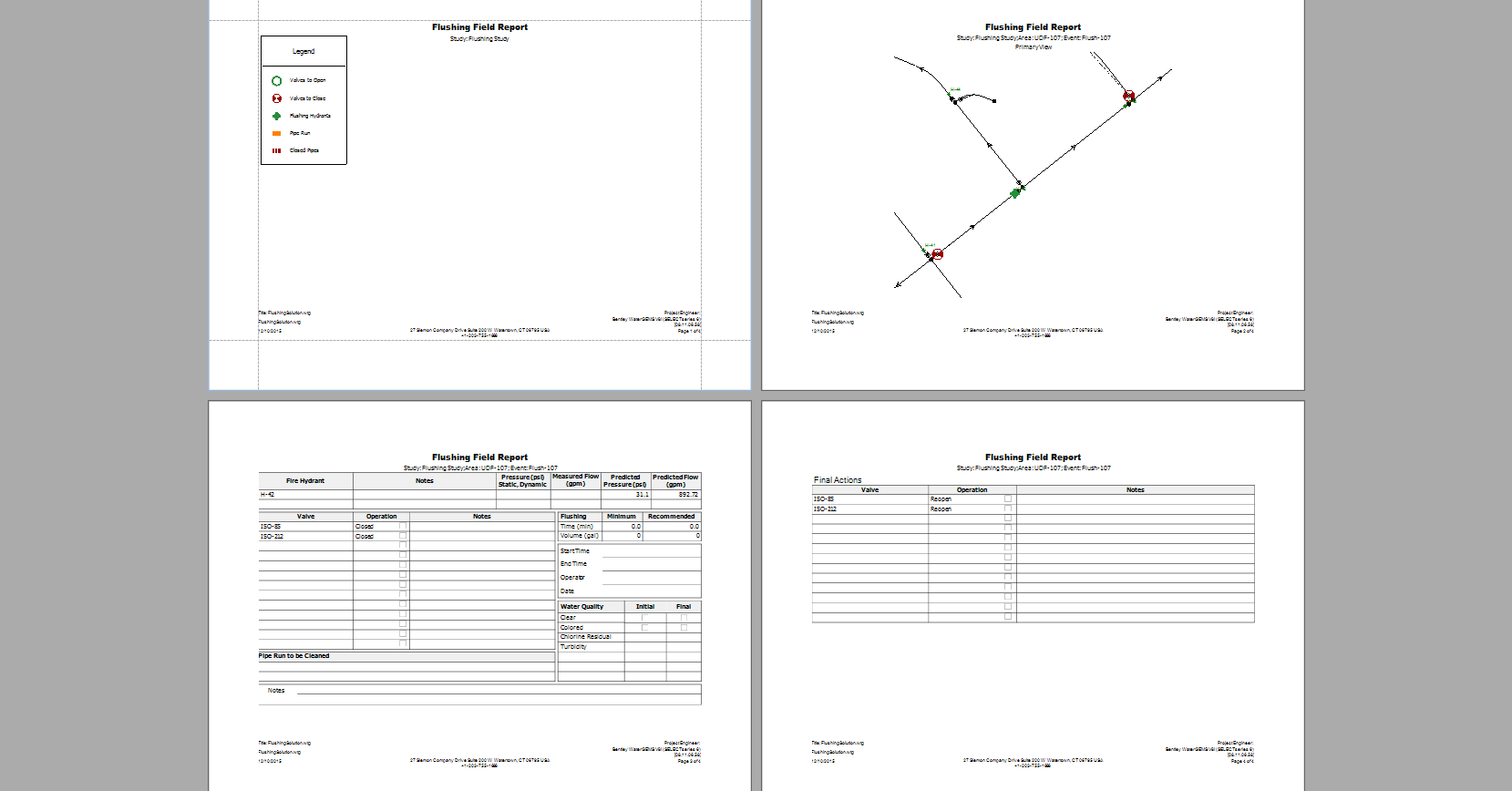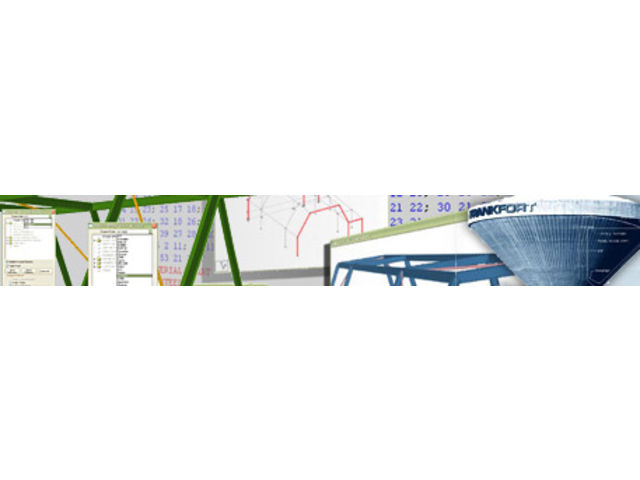

- #Bentley water cad entering fire flow data full#
- #Bentley water cad entering fire flow data software#
These include AutoLISP, Visual LISP, VBA. AutoCAD 2010 introduced parametric functionality and mesh modeling.ĪutoCAD supports a number of application programming interfaces (APIs) for customization and automation.

The mental ray engine was included in rendering, it was now possible to do quality renderings. Moreover, it became easier to edit 3D models. With the release of AutoCAD 2007 came improved 3D modeling functionality, which meant better navigation when working in 3D.
#Bentley water cad entering fire flow data full#
Modern AutoCAD includes a full set of basic solid modeling and 3D tools. Since the mid-1990s, AutoCAD has supported custom objects through its C++ API. In earlier releases, AutoCAD used primitive entities - such as lines, polylines, circles, arcs, and text - as the foundation for more complex objects.
#Bentley water cad entering fire flow data software#
Most CAD software at the time ran on graphics terminals connected to mainframe computers or mini-computers. inc Initially released in late 1982, AutoCAD was one of the first CAD programs to run on personal computers, and notably the IBM PC.
Click the Compute button to calculate the hydrant flow curve.AutoCAD is a CAD(Computer Aided Design or Computer Aided Drafting) software application for 2D and 3D Designing and Drafting, developed and sold by Autodesk. 
Choose a time step from the Time list pane.Enter values for Nominal Hydrant Flow and Number of Intervals in the corresponding fields.
 Choose the junction or hydrant element that will be used for the hydrant flow curve from the Hydrant/Junction pull-down menu or click the ellipsis button to select the element from the drawing pane. You may also select multiple times in order to generate multiple hydrant curves for comparison This behaves the same way as an EPS snapshot calculation. Choose the time at which you wish to run your hydrant curve and the corresponding pattern multipliers will be used for that time. Time: Choosing the time of the hydrant curve can affect the results of the curve. Note that if you have a number of intervals value that is too high then high flow results on the resultant curve may not be correct since the calculation will not calculate more than 1000 points on the curve, for performance reasons. This results in points on the hydrant curve being calculated from 0 flow to the zero pressure point in steps of 100gpm. For example, a nominal hydrant flow of 1000gpm and number of intervals set to 10 will result in a flow step of 1000/10 = 100gpm. Number of Intervals: This value is used with the nominal flow value to determine the flow step to be used with the hydrant calculation. Note that if you choose a nominal hydrant flow that is too small and not representative of the hydrant then the high flow results on the resultant curve may not be correct since the calculation will not calculate more than 1000 points on the curve, for performance reasons. A higher nominal flow value results in a larger flow step and better performance of the calculation. The value for nominal flow is used together with the number of intervals value to determine a reasonable flow step to use when calculating the hydrant curve. Nominal Hydrant Flow: This value should be the expected nominal flow for the hydrant (i.e., the expected flow or desired flow when the hydrant is in use). The Hydrant Flow Curve Editor dialog displays the flow vs pressure table, which is computed by the program the table is in part based on the Nominal Hydrant Flow and Number of Intervals values you define, which are used for formatting of the curve. Hydrant curves are useful when you are trying to balance the flows entering a part of the network, the flows being demanded by that part of the network, and the flows being stored by that part of the network. Hydrant curves allow you to find the flow the distribution system can deliver at the specified residual pressure, helping you identify the system's capacity to deliver water that node in the network.
Choose the junction or hydrant element that will be used for the hydrant flow curve from the Hydrant/Junction pull-down menu or click the ellipsis button to select the element from the drawing pane. You may also select multiple times in order to generate multiple hydrant curves for comparison This behaves the same way as an EPS snapshot calculation. Choose the time at which you wish to run your hydrant curve and the corresponding pattern multipliers will be used for that time. Time: Choosing the time of the hydrant curve can affect the results of the curve. Note that if you have a number of intervals value that is too high then high flow results on the resultant curve may not be correct since the calculation will not calculate more than 1000 points on the curve, for performance reasons. This results in points on the hydrant curve being calculated from 0 flow to the zero pressure point in steps of 100gpm. For example, a nominal hydrant flow of 1000gpm and number of intervals set to 10 will result in a flow step of 1000/10 = 100gpm. Number of Intervals: This value is used with the nominal flow value to determine the flow step to be used with the hydrant calculation. Note that if you choose a nominal hydrant flow that is too small and not representative of the hydrant then the high flow results on the resultant curve may not be correct since the calculation will not calculate more than 1000 points on the curve, for performance reasons. A higher nominal flow value results in a larger flow step and better performance of the calculation. The value for nominal flow is used together with the number of intervals value to determine a reasonable flow step to use when calculating the hydrant curve. Nominal Hydrant Flow: This value should be the expected nominal flow for the hydrant (i.e., the expected flow or desired flow when the hydrant is in use). The Hydrant Flow Curve Editor dialog displays the flow vs pressure table, which is computed by the program the table is in part based on the Nominal Hydrant Flow and Number of Intervals values you define, which are used for formatting of the curve. Hydrant curves are useful when you are trying to balance the flows entering a part of the network, the flows being demanded by that part of the network, and the flows being stored by that part of the network. Hydrant curves allow you to find the flow the distribution system can deliver at the specified residual pressure, helping you identify the system's capacity to deliver water that node in the network.








 0 kommentar(er)
0 kommentar(er)
